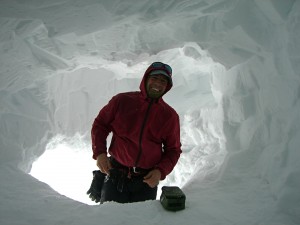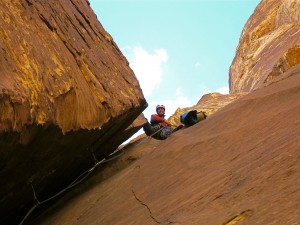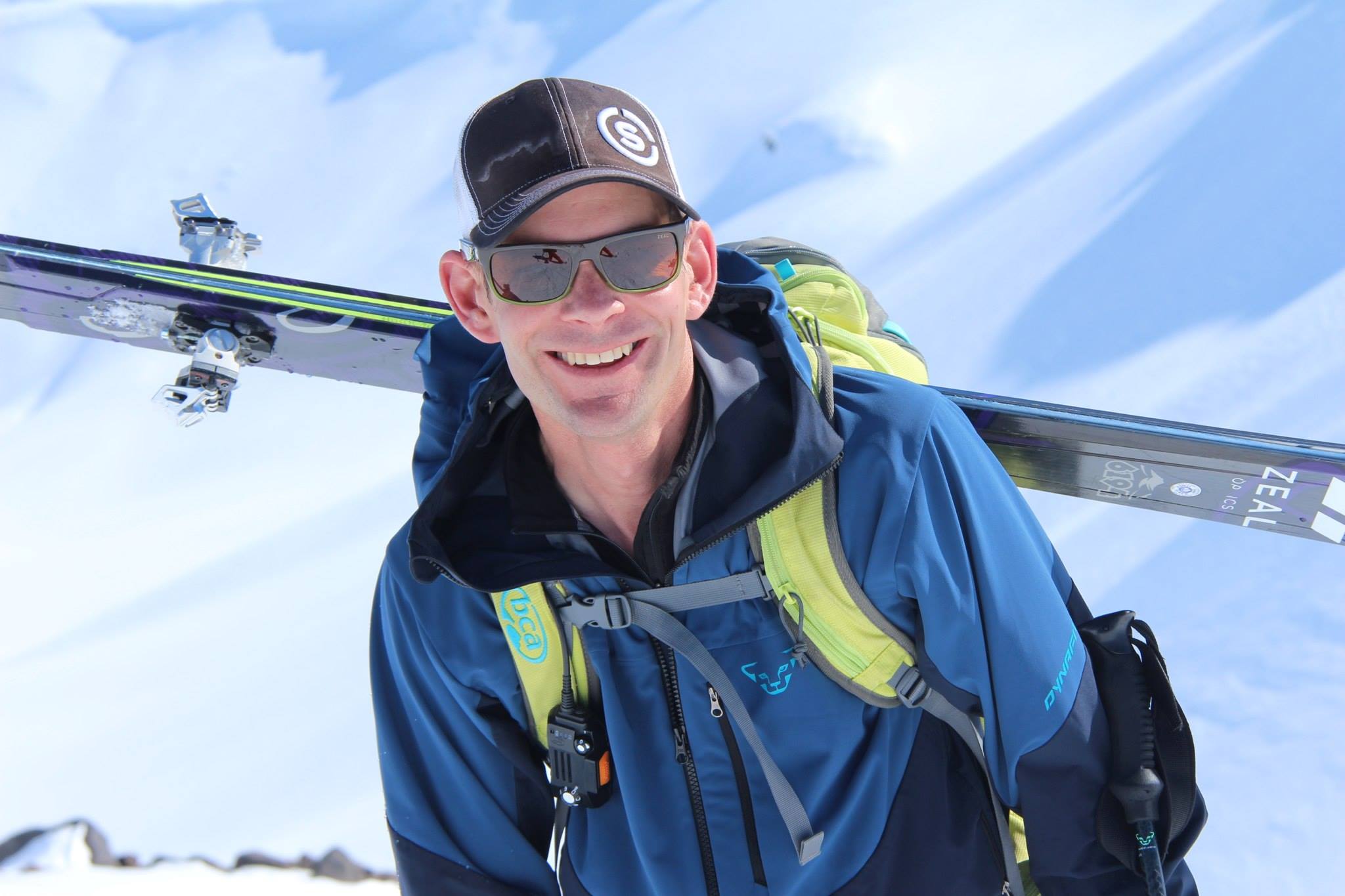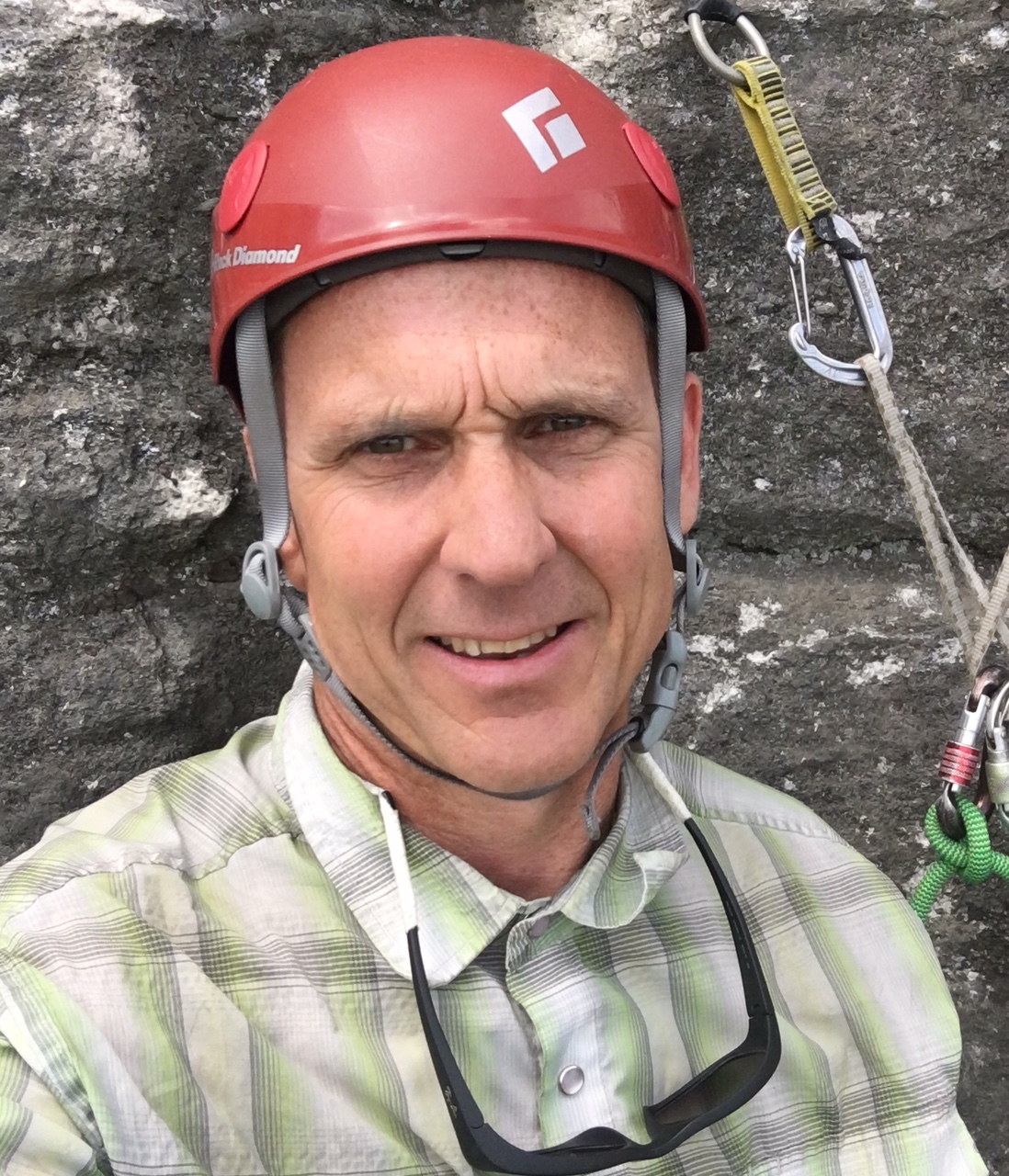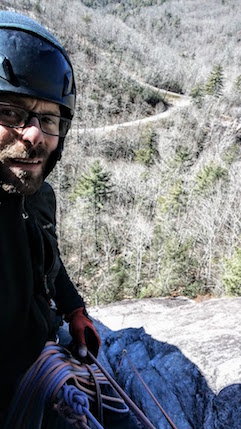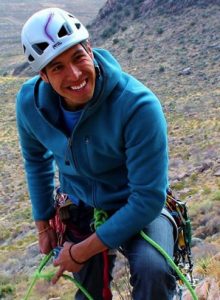A Q + A with 2012 GORE-TEX Scholarship recipient Jesse Williams
The AMGA recently had a chance to interview Jesse Williams, recipient of the 2012 GORE-TEX Scholarship, to get his thoughts on the scholarship, its benefits, the application process, and what he learned during his courses along the way. In addition to being an American Mountain Guide, Williams is also the manager of the Petzl Technical Institute, based in West Valley City, Utah.

Jesse Williams, recipient of the 2012 GORE-TEX Scholarship, climbing in Yosemite National Park, California. Photo: Jesse Williams Collection
How did you come to learn about the GORE-TEX scholarship?
Formal mountain-guide training requires a relatively significant investment in time, energy, and resources—especially for working guides. The AMGA has done a great job over the years of developing a network of supportive sponsors and partners, and streamlining the application process for scholarship funding. It is a competitive process, and requires diligence to complete, but thanks to sponsors like GORE-TEX, those resources are there for motivated candidates. It took a few tries, but the more I demonstrated commitment to the profession, the more competitive I became as an applicant.
How has the GORE-TEX Scholarship benefited your career?
I received the scholarship for the Ski Guide Exam in 2012, which completed the American Mountain Guide and IFMGA certification process for me. Not only did those several years of training and assessment directly improve my guiding skills and capabilities, but they also helped me to refine my overall ability to plan and execute objectives. For me, the Gore-Tex Scholarship was the last step in a more sustainable and professional career as a mountain guide, and now as manager of the Petzl Technical Institute. International certification in professional work (or play) at-height was a prerequisite for my position.
What sparked your passion for mountaineering and climbing?
My grandmother has a funny story about taking me for a walk along a dirt road as a very young child. Apparently, I found an old piece of rebar by the road, bent it into a piolet, and started hacking and kicking steps up a steep dirt embankment.
What were you doing prior to receiving the GORE-TEX scholarship?
I started rock instructing and guiding in 1995—right out of college—and various aspects of mountain guiding have been my primary occupation since. Making a living as a guide is a financially challenging proposition, and the GORE-TEX Scholarship funded the final step in a multiyear pursuit of professional certification. Having (at that time) committed 17 years to instruction and guiding already, it was an important personal validation of a career choice I had already long since made.
From your experience, how do AMGA courses separate themselves from other guiding and mountaineering courses available?
AMGA training and certification are THE internationally recognized standard for professional mountain guides and climbing instructors in the US.
What is one distinct memory that you have from your training to be an AMGA guide?
Losing my cool. And then learning how to get it back.
What is your favorite location to guide?
At times, I’ve been enamored with New Hampshire’s White Mountains, the North Cascades, the Alaska ranges, and the Tetons—but I really learned the fundamentals of how to climb, ski, and guide in the Adirondack Mountains in the Northeast. They present an even mix of traditional rock, ice, and mixed terrain, all easily accessed from picturesque, woodsy mountain towns. I really like the ice and mixed climbing there—but the winter weather can be extreme. It’s a good place for GORE-TEX; in a weekend of ice climbing you may climb in Gore Windstopper fleece in single-digit sunshine, and the next day suit up in GORE-TEX Pro Shells in 33-degree rain.
When working with guides from other organizations, what is the biggest difference you notice between their training and the training that you received from the AMGA as a result of the GORE-TEX Scholarship?
AMGA programs teach contemporary guiding techniques for alpine-style movement through mountain terrain. Candidates (and instructor/examiners) are held accountable to standards in movement and technical application. While there are many outdoor leadership programs that teach outdoor skills and institutional climbing education, I think of an AMGA credential as much more like a commercial pilot or captain’s license—in which the level of responsibility and standard of care require solid technical skills and expert capabilities.
What is one piece of gear that you do not guide without?
Lunch.
What advice would you give a potential GORE-TEX applicant?
Demonstrate a commitment to the process, to the profession, and to the ability to follow through. And keep trying. The more involvement you demonstrate, the more competitive your application will be.

